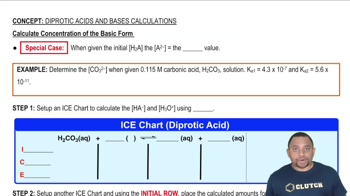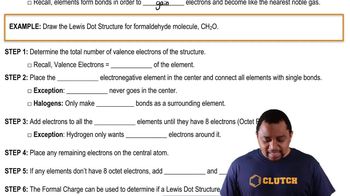Here are the essential concepts you must grasp in order to answer the question correctly.
Acid-Base Reactions
Acid-base reactions involve the transfer of protons (H+) between substances. In this case, HBr is a strong acid that dissociates completely in solution, releasing H+ ions, while KOH is a strong base that dissociates to produce OH- ions. The reaction between H+ and OH- leads to the formation of water, which is crucial for determining the acidity or basicity of the resulting solution.
Recommended video:
Concentration and Volume Calculations
To analyze the resulting solution's pH, it is essential to calculate the moles of H+ and OH- present after mixing. This involves using the concentration (Molarity) and volume of each solution to find the total moles of acid and base. The stoichiometry of the reaction will help determine if there is an excess of H+ or OH-, which dictates whether the solution is acidic, basic, or neutral.
Recommended video:
Calculate Concentration of the Basic Form
Neutralization
Neutralization is the process where an acid and a base react to form water and a salt, typically resulting in a solution that is neutral (pH 7) if equal moles of acid and base are present. In this scenario, determining whether the moles of H+ from HBr equal the moles of OH- from KOH will indicate if the solution is neutral, acidic, or basic after the reaction.
Recommended video:
Lewis Dot Structures: Neutral Compounds

 Verified step by step guidance
Verified step by step guidance


